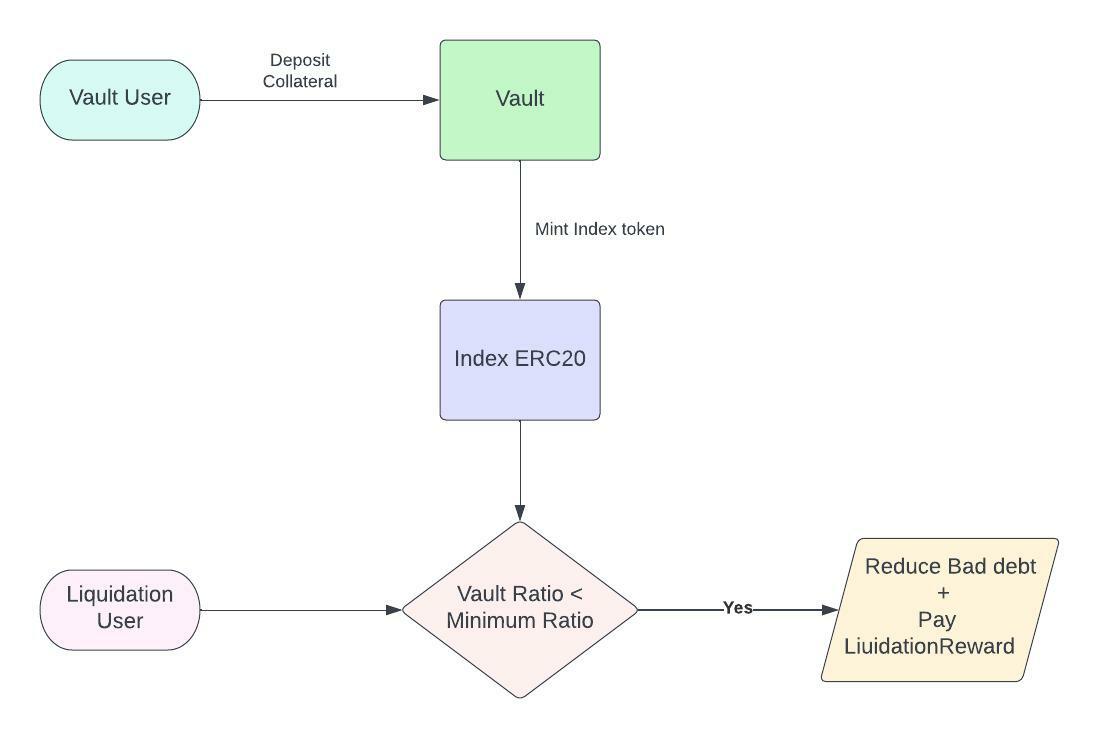Detailed Introduction

Abstract
Cryptex provides a way to tokenize market indices that are otherwise hard to build in a decentralized ecosystem. For example, indexes consisting of several tokens are hard to track and rebalance. Cryptex solves this problem by creating synthetic assets that track the index price.
Collateralization
All synthetic assets issued by the protocol are backed by assets like ETH, DAI, etc. Assets provide security that a set of rules backs the index and can be redeemed for the underlying asset. In addition, any ERC20-compatible token can be added as collateral to the system upon passing a voted proposal through governance.
Vaults
Vaults can be thought of as safes that store a users collateral.
Debt
The protocol upon collateralization allows the minting of new index tokens that are ERC20 compliant. The protocol can be thought of as a collateral loan whereby the borrower borrows index tokens against the deposited collateral. The system, therefore, treats the amount of the borrowed token as debt.
Vault Ratio
Since most ERC-20 tokens are highly volatile, the system over-collateralizes the issued debt. The ratio between the value of the collateral deposited and the value of index tokens borrowed is called the vault ratio. It is also known as the collateralization ratio.
Minting
New Index tokens can be issued by minting new tokens. The protocol ensures a minimum vault ratio while minting new tokens.
Burning
A user can reduce their debt by destroying some of the minted index tokens. This process of reducing the supply of the index tokens is called burning.
Liquidation
If the vault ratio falls below the minimum value, then the vault can be liquidated for its underlying collateral. The protocol also charges a penalty as an incentive for the liquidator to safeguard the protocol against bad debt.
Fees
In order for Cryptex to be a self-sustaining protocol, it charges a mint fee and burn fee to generate revenue. The revenue generated through fees is owned by the DAO. The fees can be changed upon the passing of a voted proposal.